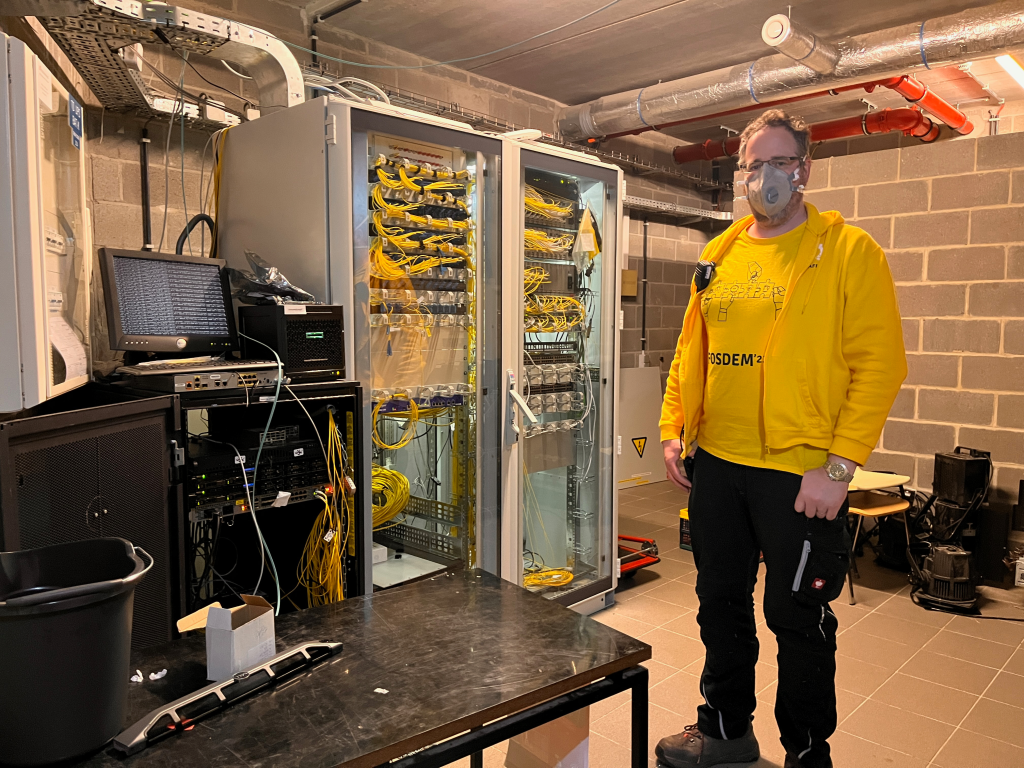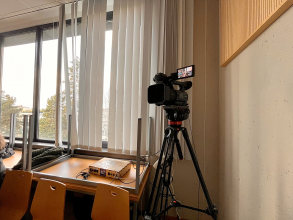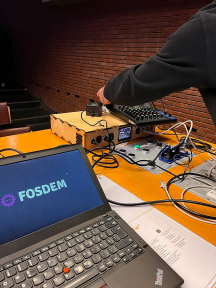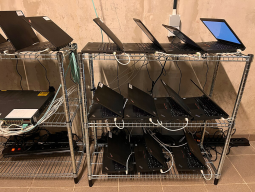They report around 12,000 participants. The largest event in the world dedicated to Free software has been held every year in Brussels since 2000 and is free, built entirely with free software and organized without registrations.
Listen to Richard (RichiH) Hartmann and Basti Schubert explaining how FOSDEM is organised.

There are 2 things the Wikimedia movement can learn from FOSDEM :
1. how to welcome a huge flood of offline and online participants for free and without asking or collecting any personal data (just like Wikimedia projects do);
2. how to organize an event exclusively with free software (exactly the same way Wikimedia projects are conceived and made).
It is not difficult to notice the success of this extraordinary event. For two days the University of Brussels is invaded by an immense and unspecified number of people. From 9 am to 7 pm, 34 parallel sessions are filled with participants of all ages eager to discover the latest developments in the software they contribute to, listen to programmers and system engineers, get updated on security, databases, energy sustainability, legislation and listen to where software such as Firefox, Jitsi, Matrix, Ubuntu, Wikidata, GitLab, MySQL, MariaDB, Grafana, Kubernetes are going… There are queues in front of the halls and the organizers invite you not to clog the corridors, to look for another session or to watch the event in streaming.
You go to FOSDEM without booking it, without even registering for the Wi-Fi and without paying. The conference is free, you can enter any room and to eat there are trucks and bars where you can buy sandwiches, chips, waffles, pasta, beer and other comfort foods at reasonable prices.
The organizers don’t know how many participants are there: at the end of the event they estimate attendance based on data from the network and food sales. “If the university gave us twice as many halls we would take them” – Richard Hartmann explains to me – “we run into the physical limits of the venue”. But in addition to the number of people, what is striking is the energy released by thousands of people who listen to every speech. Topics that most of the world perceives as niche become totally mainstream in those two days in Brussels. And the world we are used to that keeps asking us for data, that monitors us, suddenly stops doing it and liberated we can simply go to a conference without giving our name and – for statistical reasons – age, gender and sexual preferences.
Why do Wikimedia events need to register attendees? If it’s only for planning the catering, can’t we just stop organizing it?
The second key aspect of FOSDEM is that it is a free software event that has always been organized with free software. It would be possible to do it in many ways but the organizers wanted to create a scalable system that allows them to potentially manage an infinite number of rooms.
The system is based on two boxes per room: one box is connected to the presenter’s computer and the other to a camera. The system (which can be copied and reproduced by anyone by downloading the instructions) allows to record and stream all conferences, connects each room to a laptop and sends the information related to each event to the operation centre; in each room it is possible to set some preferences (i.e. slides only, speaker only, speaker and slides). The operation centre checks the recordings, monitors the general progress of the event and checks the audio and the number of people connected to the streaming. The laptops assigned to each room guarantee the data management, they are bought in bulk at advantageous prices and, once the event is over, they are resold at cost price. The operation centre is certainly the most professional aspect of the event and the one that guarantees its quality and effectiveness, despite the very high number of rooms.
“I need you to be a little more self-promotional” – I tell the two volunteers of the event I’m interviewing, something that as a Wikipedian I never thought I’d have to say to anyone – “But do you realize that you have created an astonishing system of streaming and recording, powering the University of Brussels network, all with free software!”. “Actually there is still a small proprietary component…” – specifies Basti Schubert regretfully and I resign myself to the fact that, modest and focused on work as they are, I will never be able to convince them to praise themselves. And when I start researching the press review, I realize that it’s not a problem of the organizers but the true approach of this event: there are no press releases, no promotions, no interviews and articles about the event. FOSDEM is known and important to those who participate in it and is cited countless times for its contents: it is an event of substance, designed to host and give the floor to others, without focusing on itself and its prestige.
What FOSDEM really teaches is trying to be what you preach you want to be. A collaborative, open project that protects the privacy of its participants, that welcomes, that lets in for free and that supports new products, services and open thoughts. These are values that the Wikimedia movement shares and that it would be important to follow in all its activities: in offline events, at Wikimania, in the work of the foundation and of the affiliates. A challenge that presents complexity but which contributes significantly to trying to be what you preach, even if there will always be “still a small proprietary component” to fix.
Listen to Richard (RichiH) Hartmann and Basti Schubert explaining how FOSDEM is organised. FOSDEM – Richard (RichiH) Hartmann and Basti Schubert in “Usmaradio” for the radio program “Scuola di pensiero” by Iolanda Pensa, edited by Iolanda Pensa and Valerio Bozzolan, recorded at FOSDEM, February 2023, CC BY-SA all.
Images of the FOSDEM infrastructure are available on https://commons.wikimedia.org/wiki/Category:FOSDEM_infrastructure.


Can you help us translate this article?
In order for this article to reach as many people as possible we would like your help. Can you translate this article to get the message out?
Start translation


